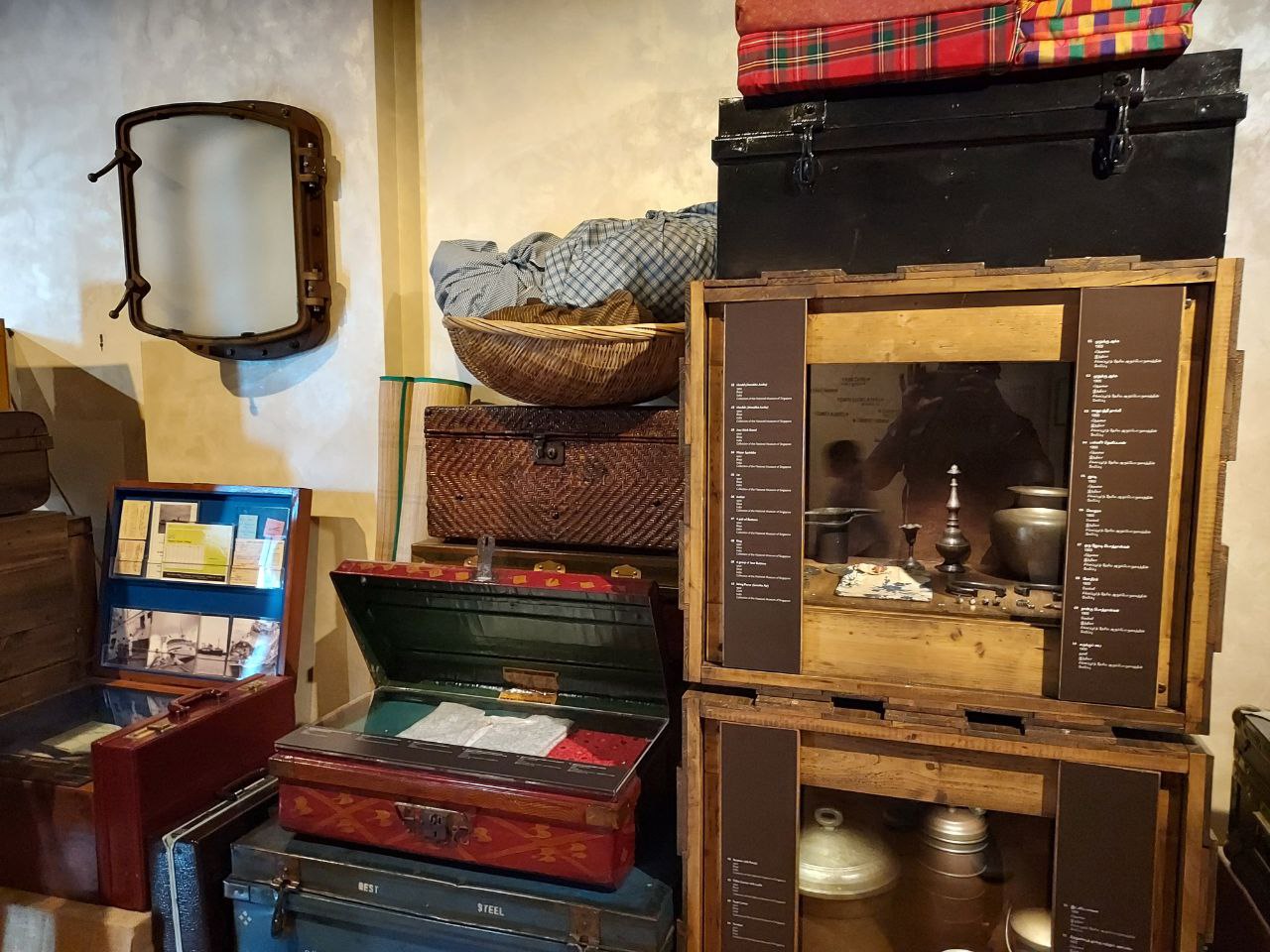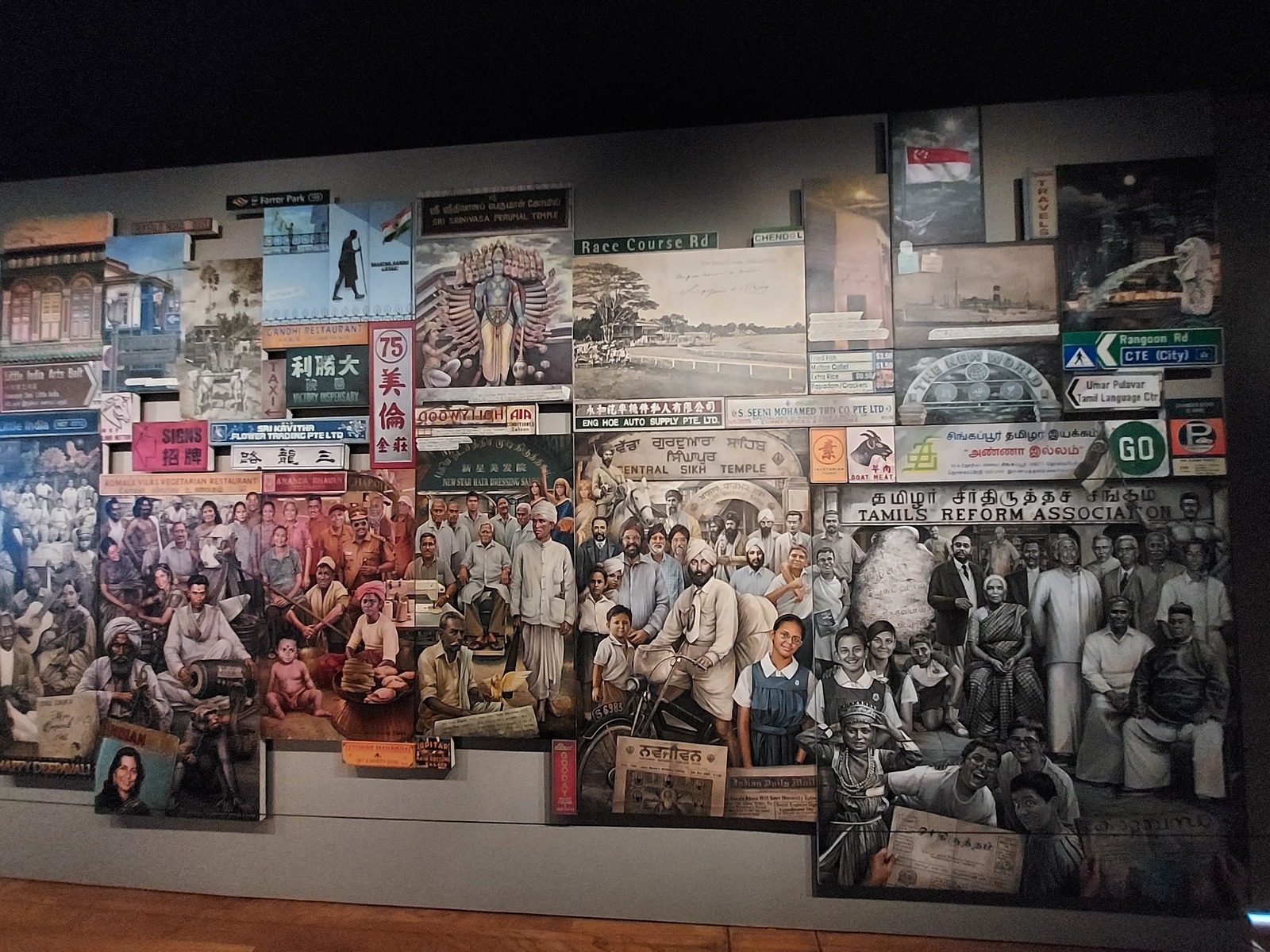Diaspora Diaries
To
The Director/Curator
Indian Heritage Centre
I was recently tasked to visit the IHC with an open mind and attempt to analyse the aspiration and narrative of the centre within context of my own subjective interpretation of the same. Following are my thoughts, criticisms, and suggestions.
I liked how the centre’s chronologically linear narrative spanning from the 1st to the 20th century was divided into 5 galleries - Early Contact, Roots and Routes, Pioneers, Social and Political Awakening, Making of a Nation. It felt like I was physically passing through time as the galleries and their artefacts become more modern in origin. I would like to point out here that the 10-minute conceptual film at the start provided a particularly engaging audio-visual introductory performance (as opposed to the usual text-based approach) and set me up for to what to expect in the trip.
I found the term “… Singapore, Singapura or Temasek …” on several of the artefact labels. While I understand that the aim of centre is more about the interpretation and preservation of Indian heritage in Singapore, and not about the entire history of Singapore itself, I believe some effort could have been taken to address the polyonymous past of Singapore. The evolution of interactions from religious influences and maritime trade all the way up to assisted and involuntary colonial migration were showcased through artefacts and excerpts; it would also be pertinent to do so with the appropriate name for the region that was in use in that temporal context.
The connections between the galleries were sometimes marked with objects that represent or signify transition - like the giant, intricately carved, Chettinad wooden doorway after gallery 1, and the elaborate boali-stepwell-inspired staircase after gallery 2. These subtle breaks in the flow of the narrative felt like turning over a page to the next chapter, giving it a layered feel and a sense of structure with convenient stopping (and resting) points. Perhaps this can be extended into the remainder of the galleries with suitable artefacts or architecture. Light can be used a medium for this – thematically set lighting in different galleries to imbue different moods through subliminal messaging. Possible examples include orange and yellow like a sunrise in Early Contact to imply beginnings, gloomy and red shades for Social and Political Awakening symbolizing turmoil, conflict, and revolution, white or gold for the last gallery Making of a Nation to symbolize peace, pinnacle, golden era.

The apt location of the museum in the bustling heart of Little India is an exceptional choice but feels like a missed opportunity. On the way from the MRT station to the museum, as I walked past a row of stalls, I could smell the fresh flowers being watered and burning sandalwood incense that can move your spirit, with Tamil being spoken in the background. I felt instantly transported to the streets of Southern India. But to my dismay, none of this was used or incorporated into the experience of the museum itself and which I believe could have greatly engaged the non-visual senses of the audience. There’s a section of Roots and Routes dedicated to displaying kitchenware, clothes, suitcases, and other common household items. Giving a sense of smell (sandalwood, attar, spices in a kitchen, etc) to this section would greatly enhance the visitor’s connection to said displays.

By far, the most impressive gallery was the “Pioneers”. It was interesting to see and learn stories of the lesser documented lives of prisoners, female plantation workers, policemen, cultural performers besides influential people like money lenders and merchants. The multi canvas panoramic oil painting - “Passage to Little India” truly evokes a strong sense of diversity and inclusivity in the multi-faceted community. To engage the non-visual senses in this section, as one moves along this long canvas, faint conversations in corresponding languages could be used to give a more authentic and immersive experience.

One aspect about the community that I was left wondering by the end however was the dynamics and relationships between the sub-groups within the community. How prevalent was the caste system? How did the aftermath of the Japanese military administration in Singapore affect the Indian community? How prevalent were the inter-religion conflicts, especially between Hindus and Muslims during the sensitive times of the partition and subsequent independence in India? Did it cause a stronger sense of unity and togetherness? These questions may or may not seem trivial to the average visitor, but they are questions that a centre like this, one of such stature and prominence in the community needs to answer in order to educate and inspire the generations to come.
Being an international student from India, it was a pleasure and an enlightening experience to learn how the Indian (or rather the South Asian) community has branched off and developed in its own way in and around the region of Singapore. But I think it is also very important to show the evolution of language, cultural practices, and religious affiliations over the centuries, within the context of Indian heritage and identity in Singapore in comparison to the parent community. This would be particularly crucial for future generations of Indian Singaporeans to learn more about their ancestry and how they came to be, providing a sense of belonging to the larger global community while being different in their own right.
I would like to conclude my thoughts with a quote from the last gallery, one that I believe encapsulates the narrative of the centre.
“It would be best for everyone to look back, see the big picture and ask: how did we arrive here? What are all the good things that we’ve done?”
– S R Nathan, Singaporean of Indian Descent, former President of Singapore
Thank you for this opportunity and your time.
Sincerely, Yeluri Ketan